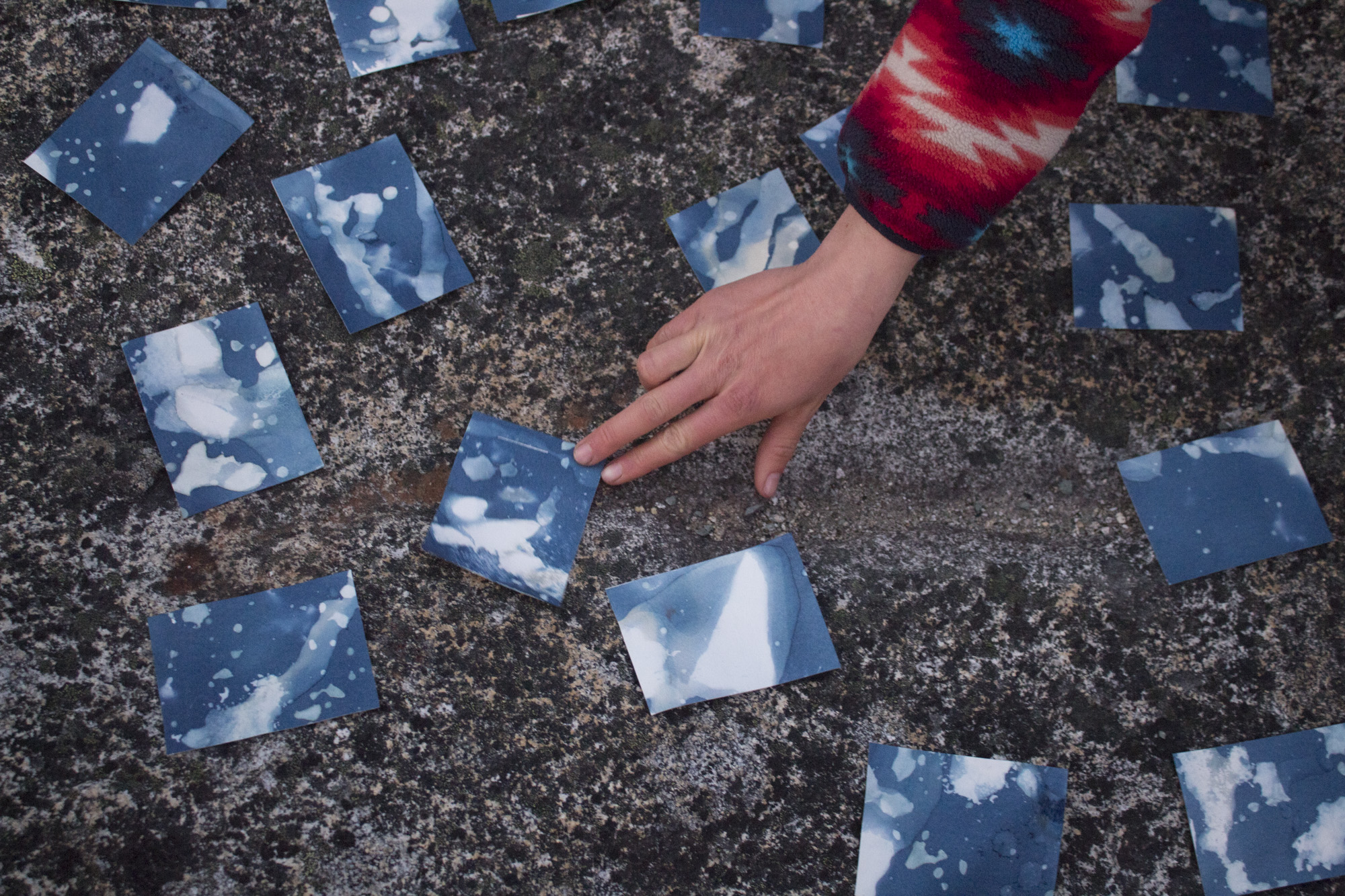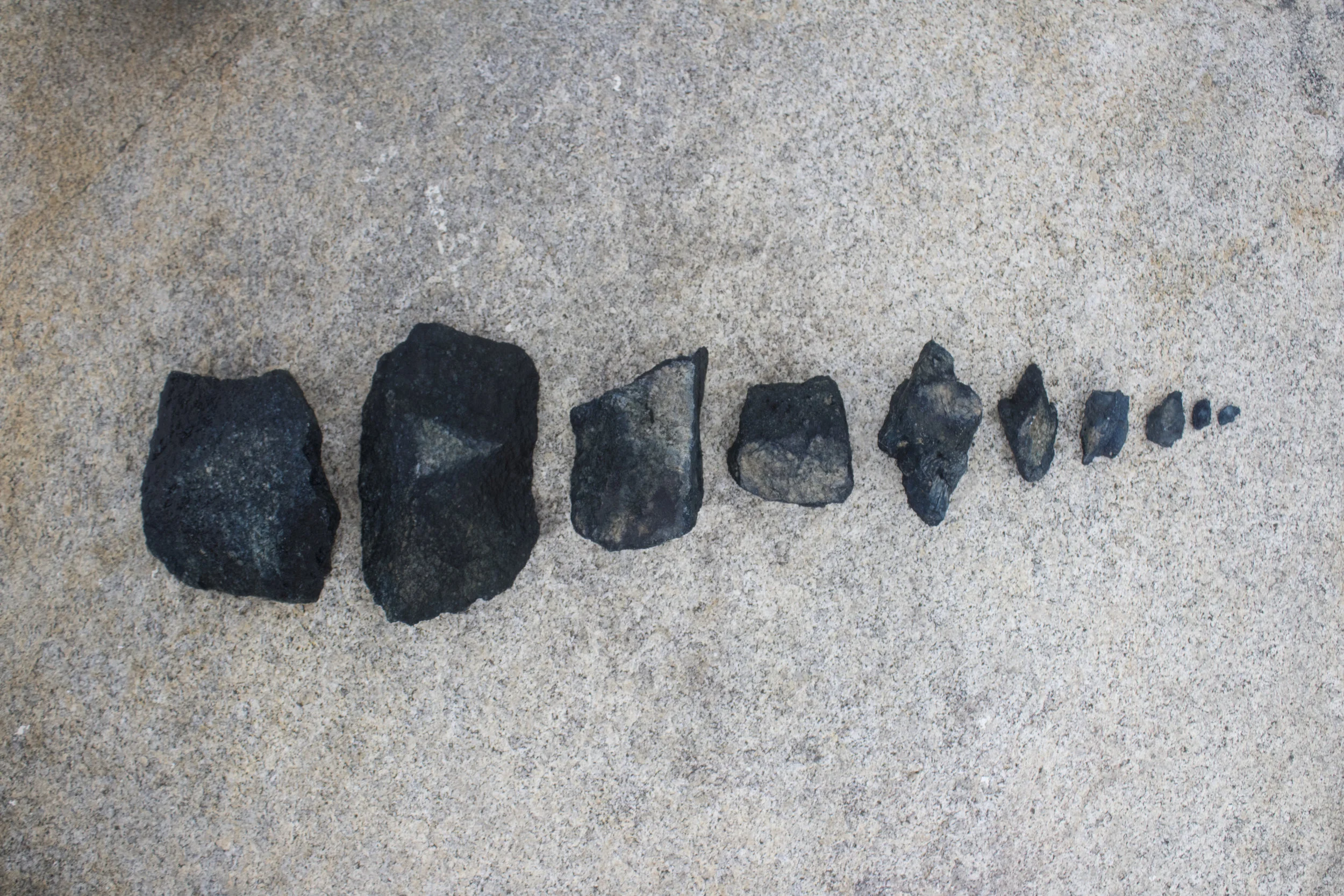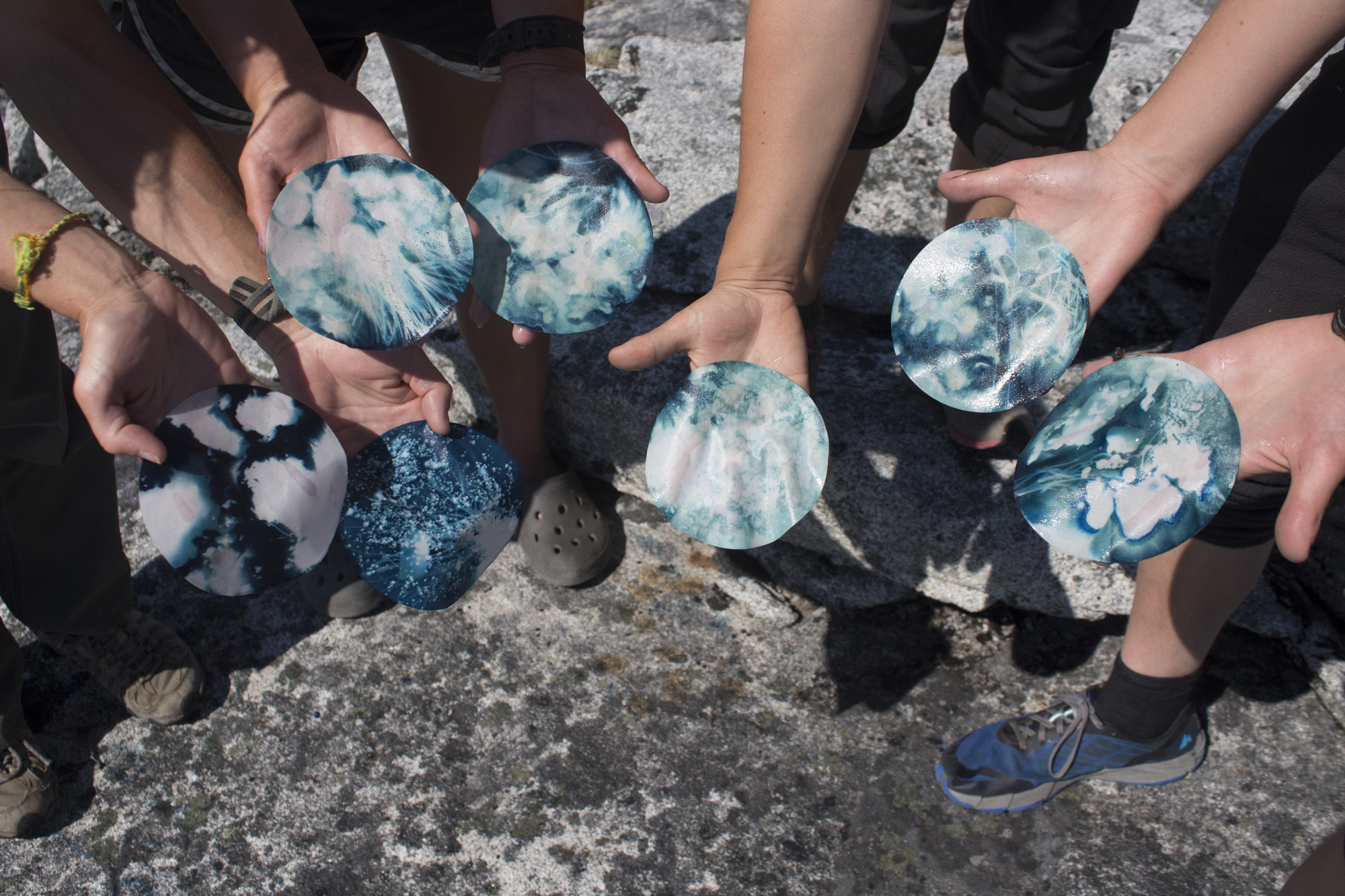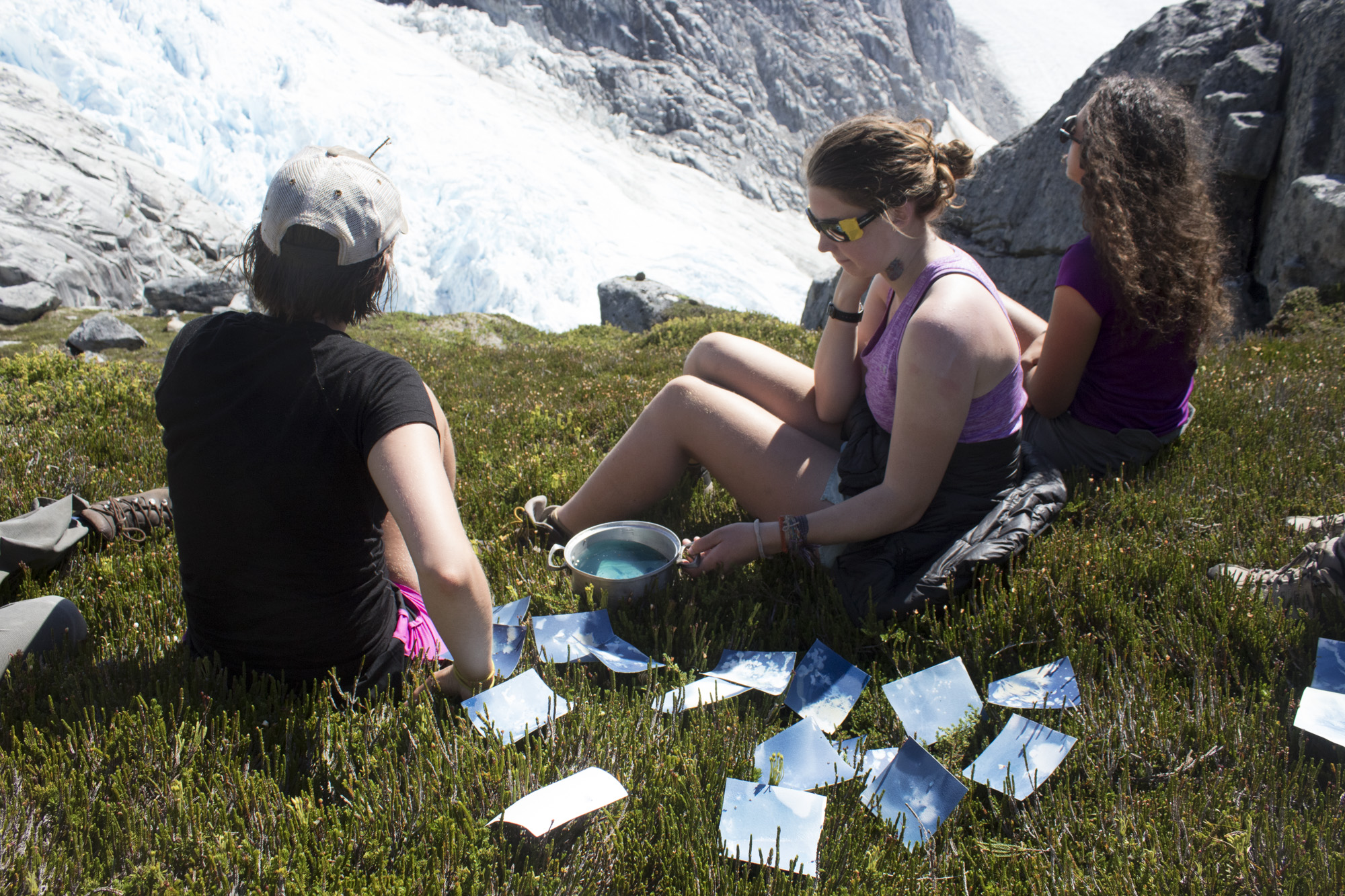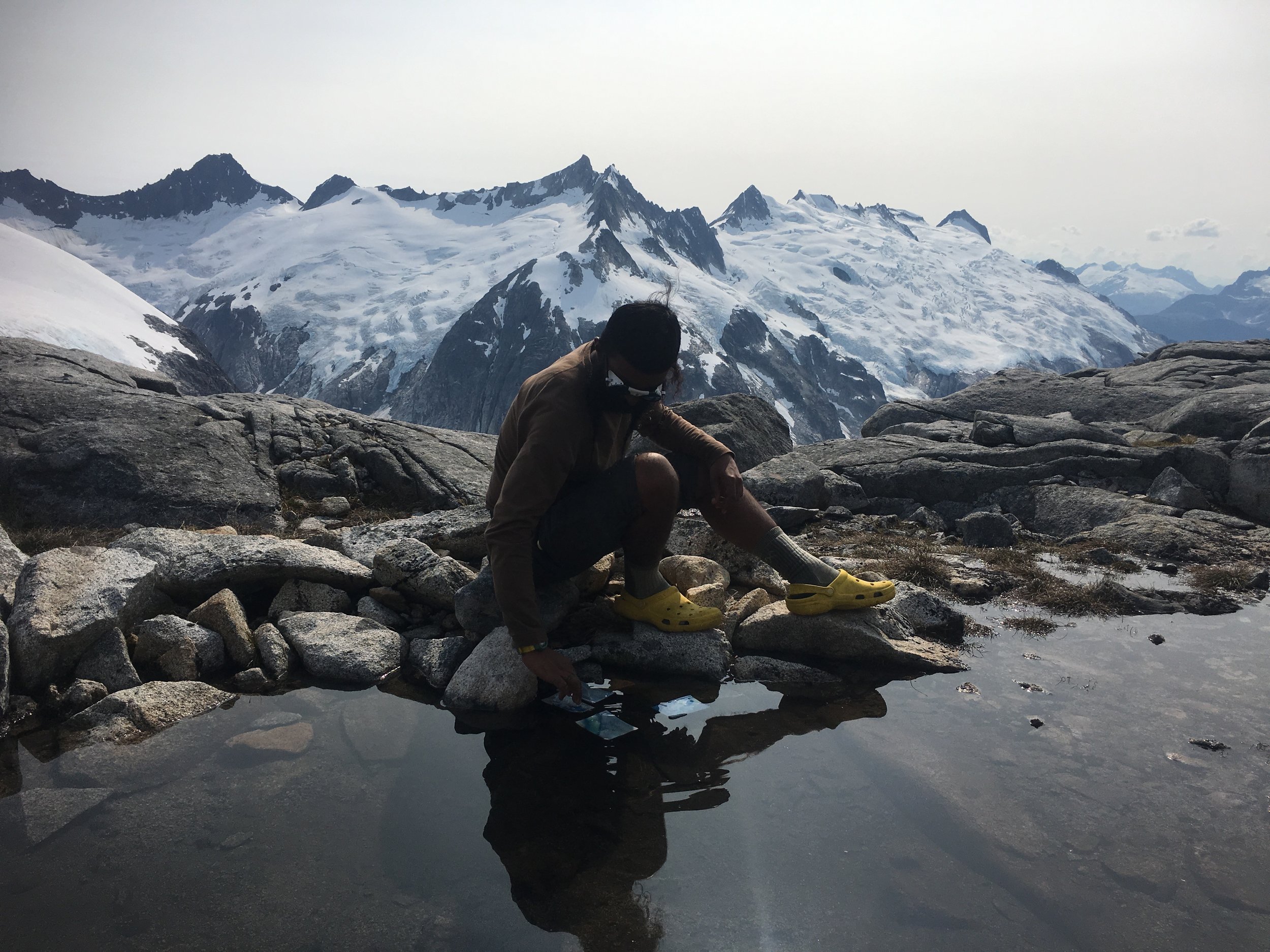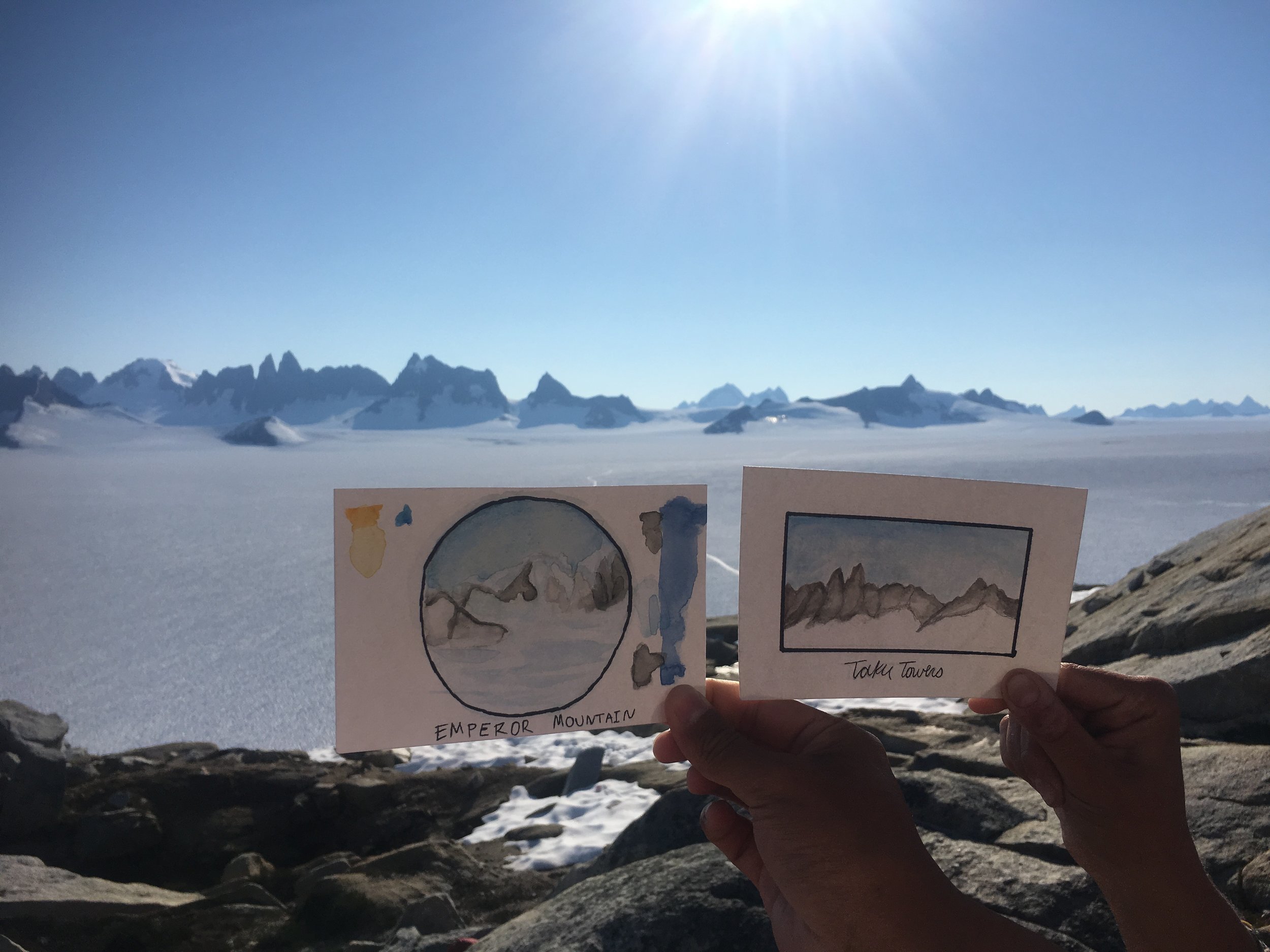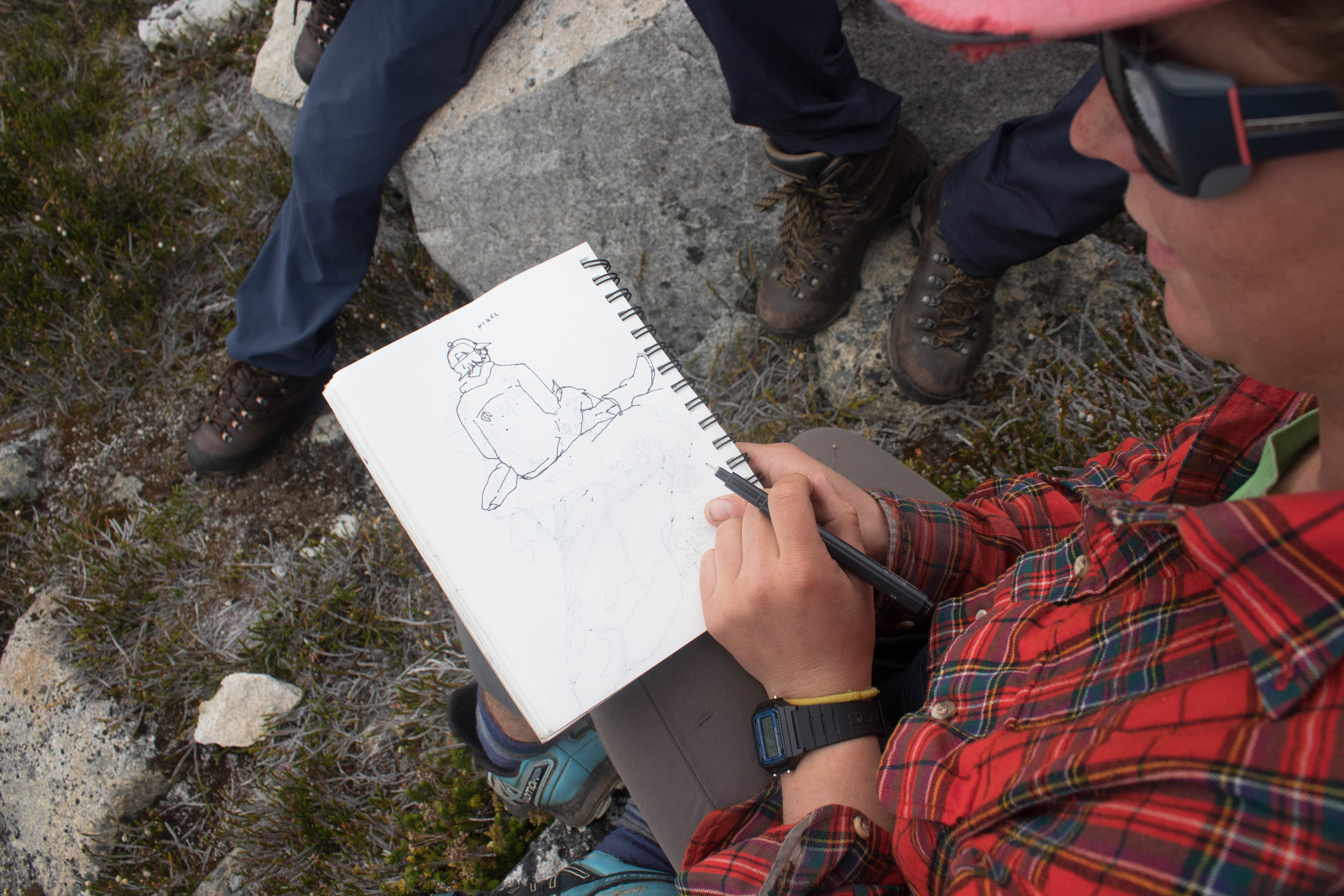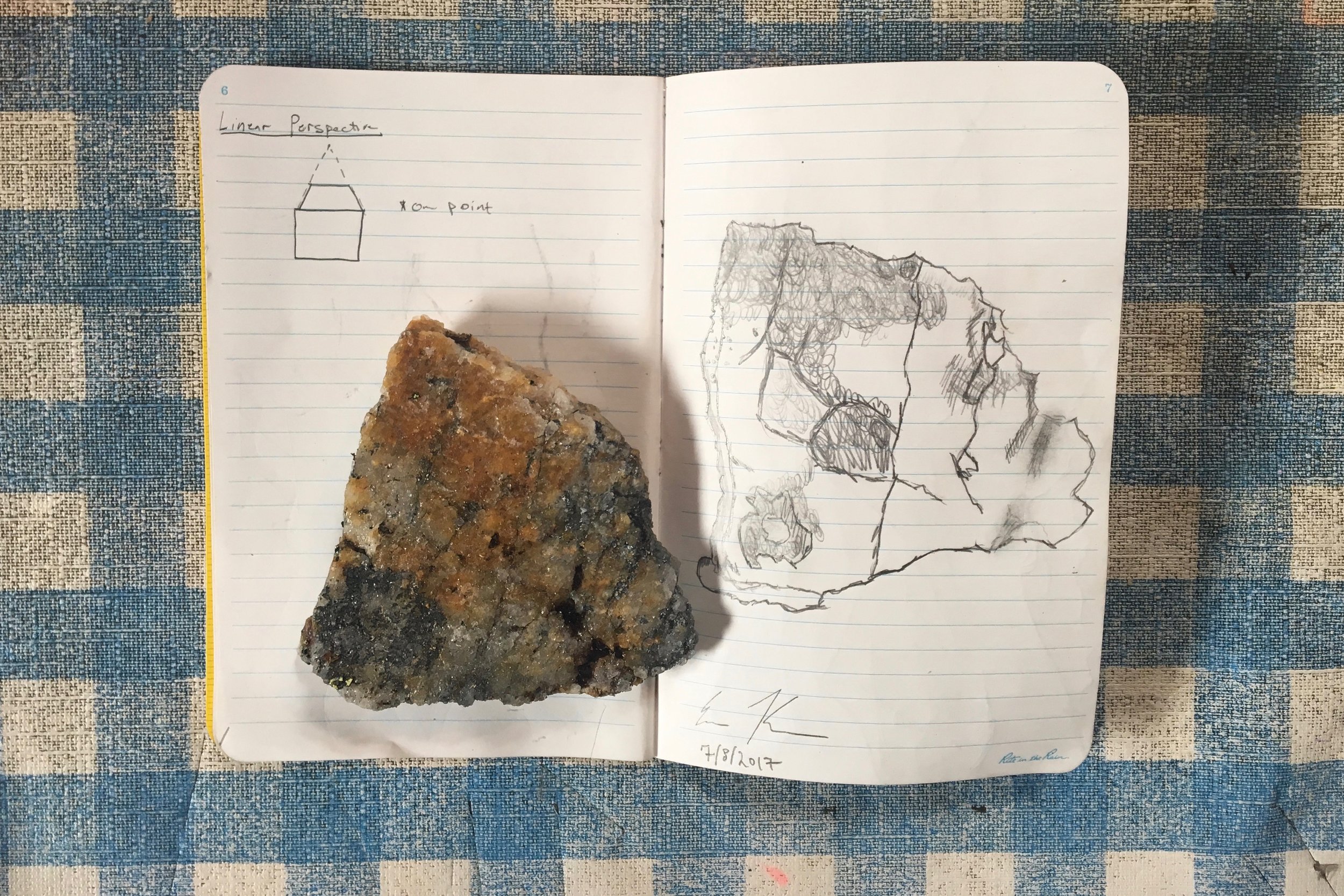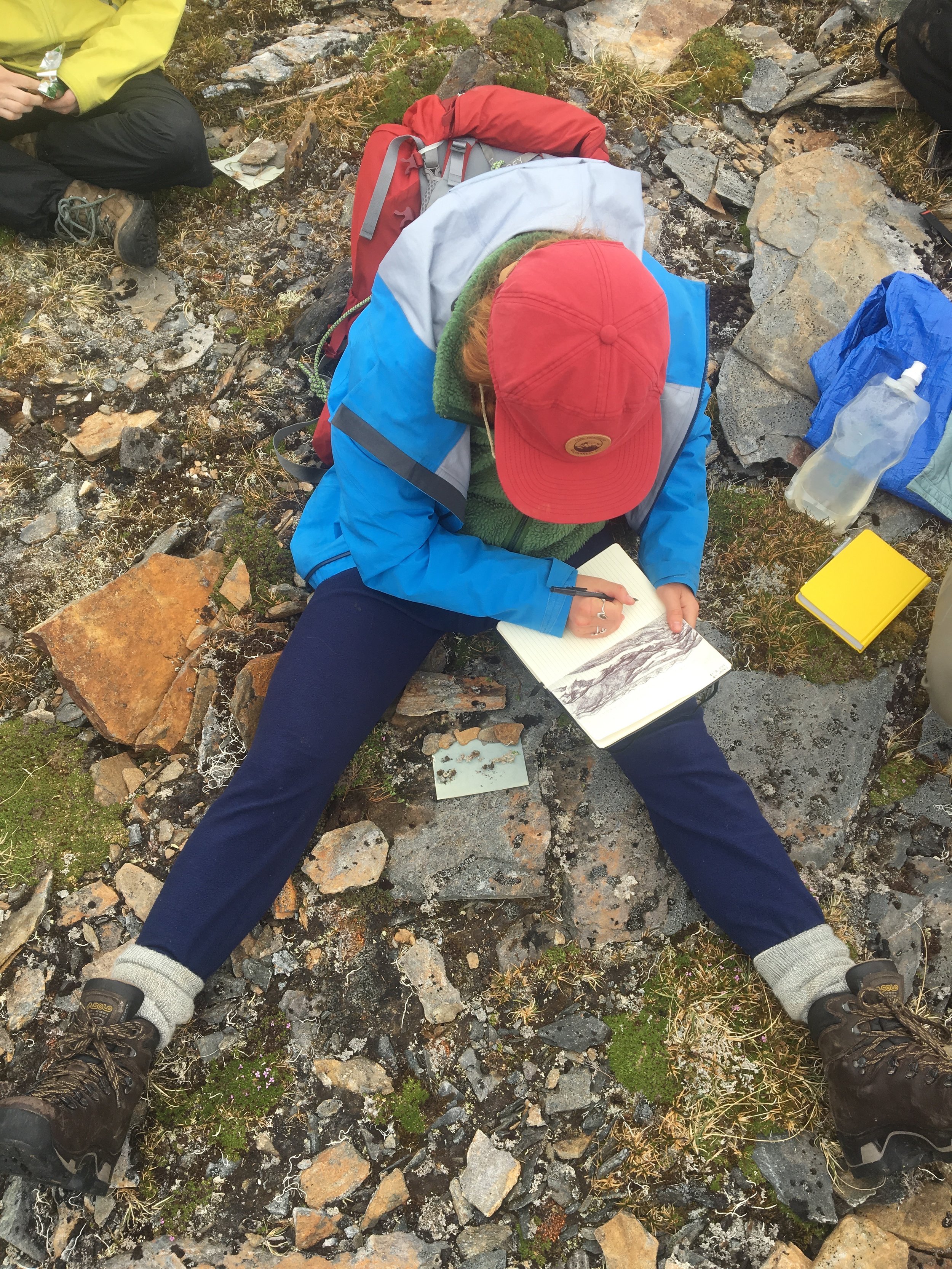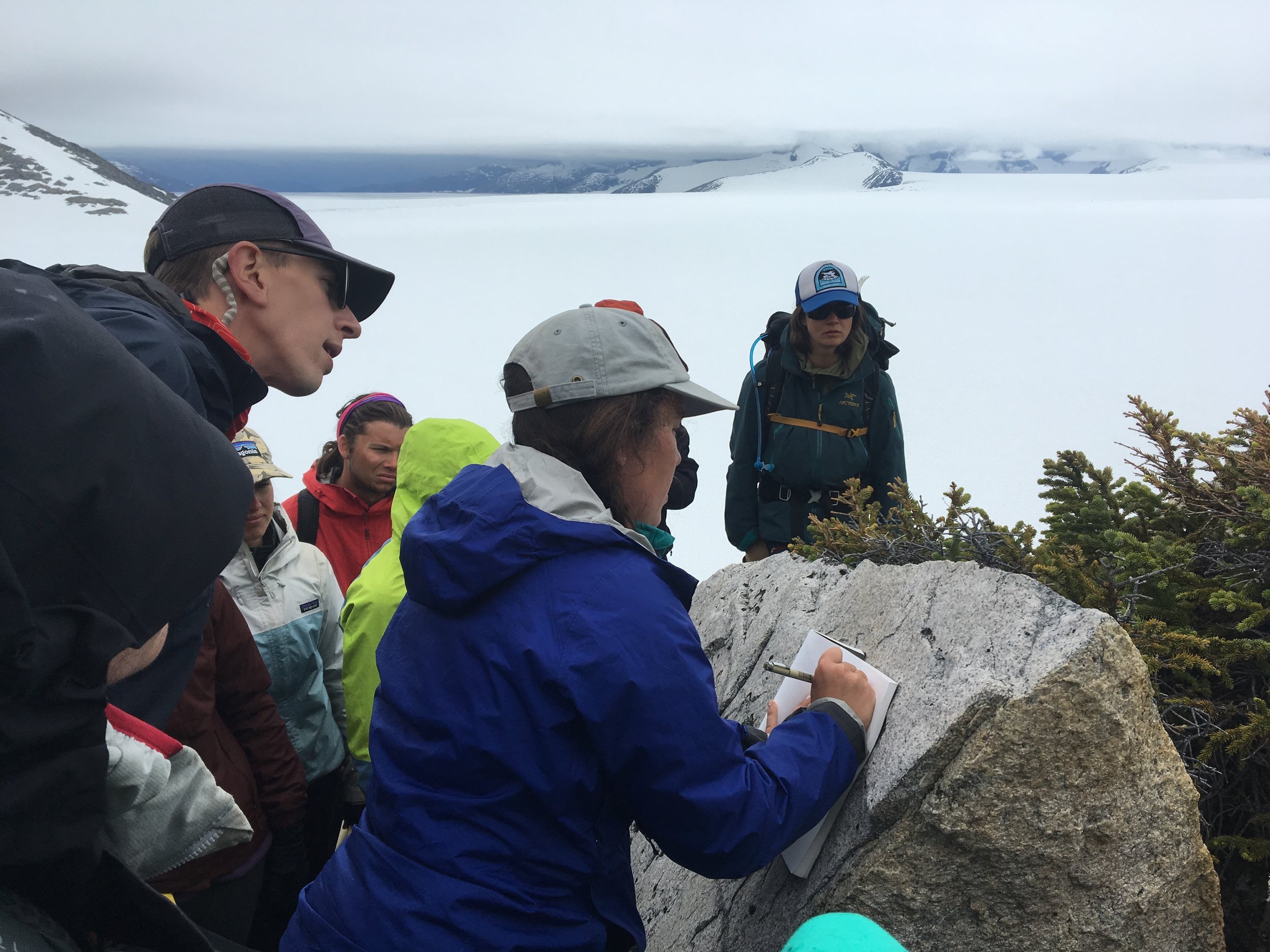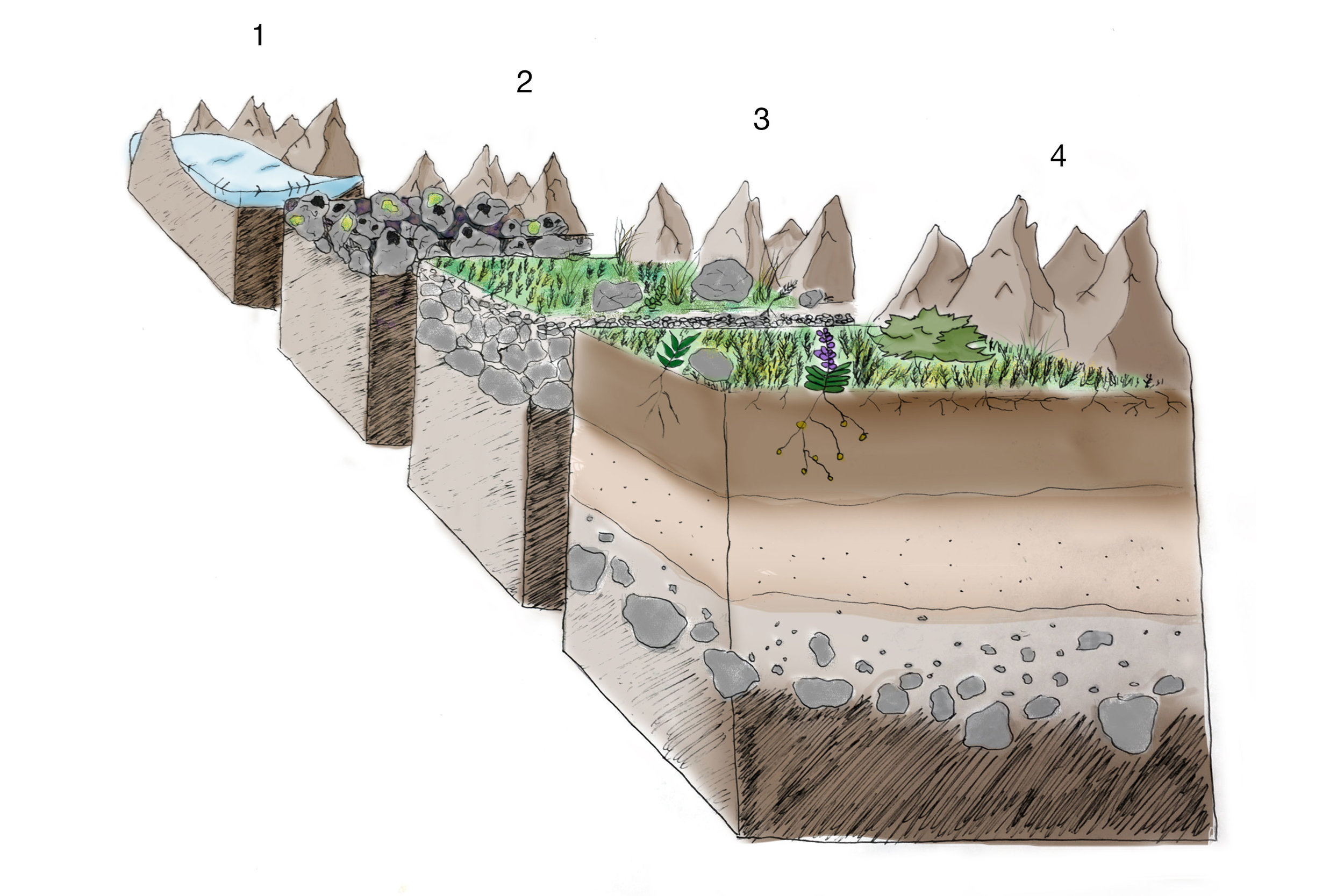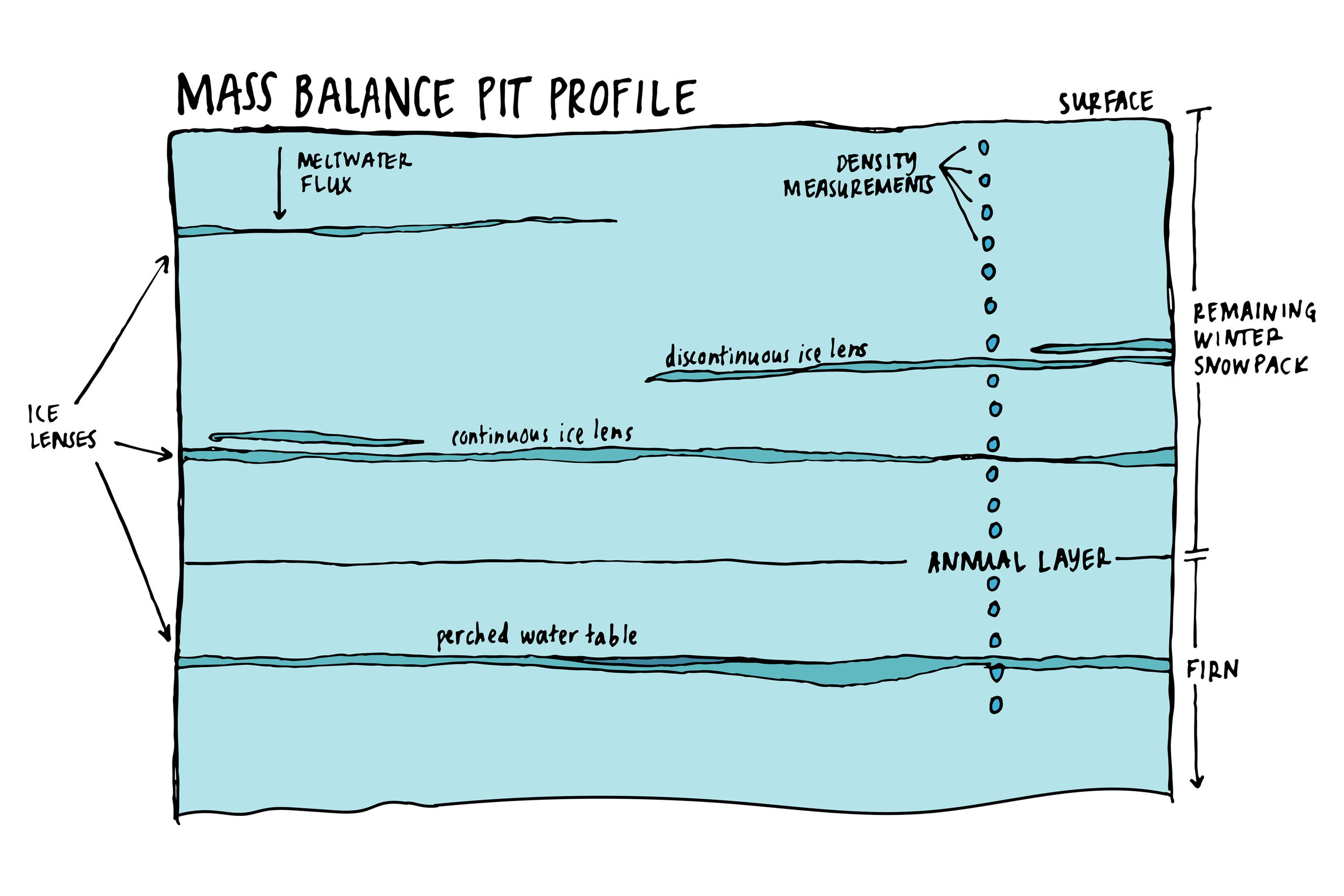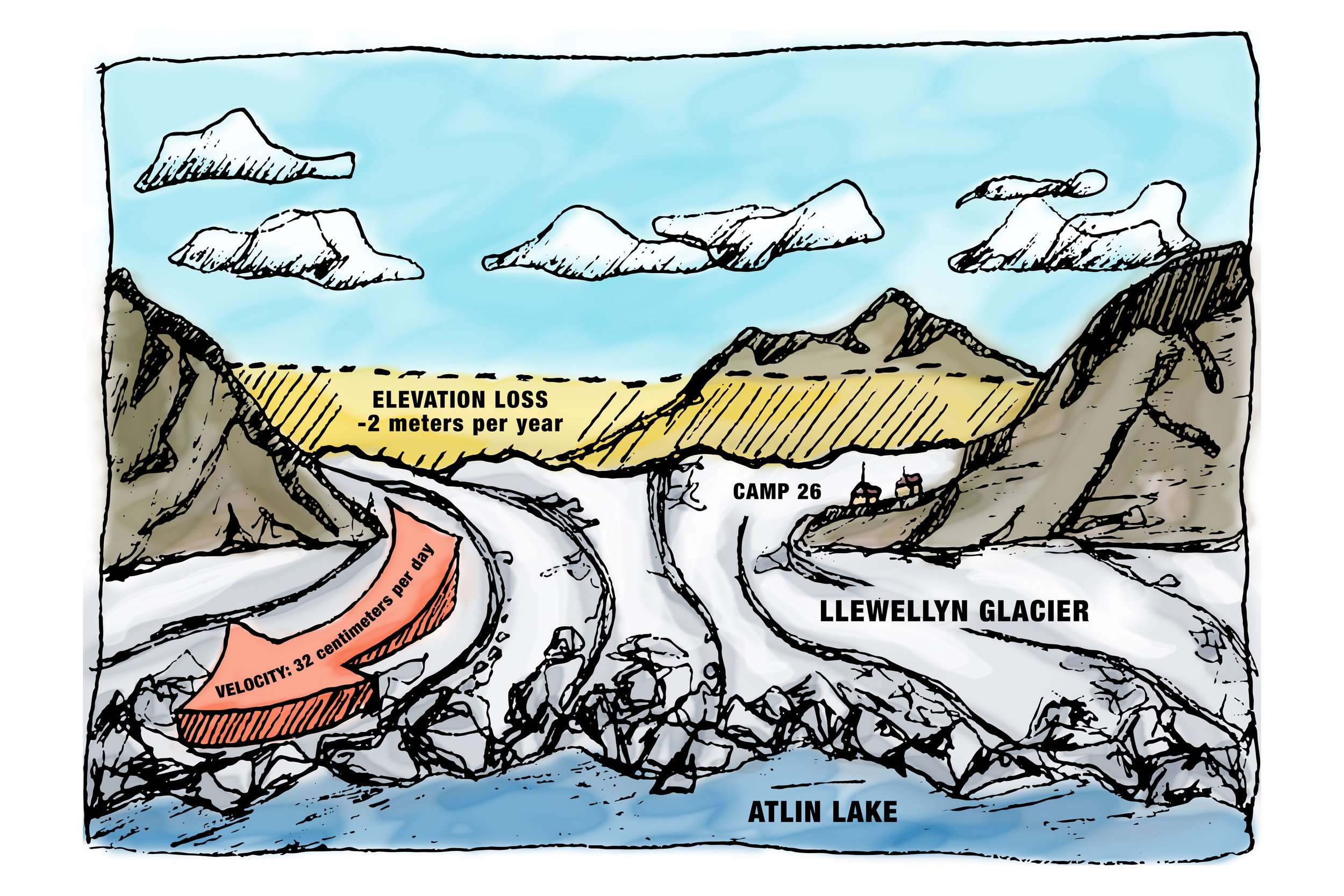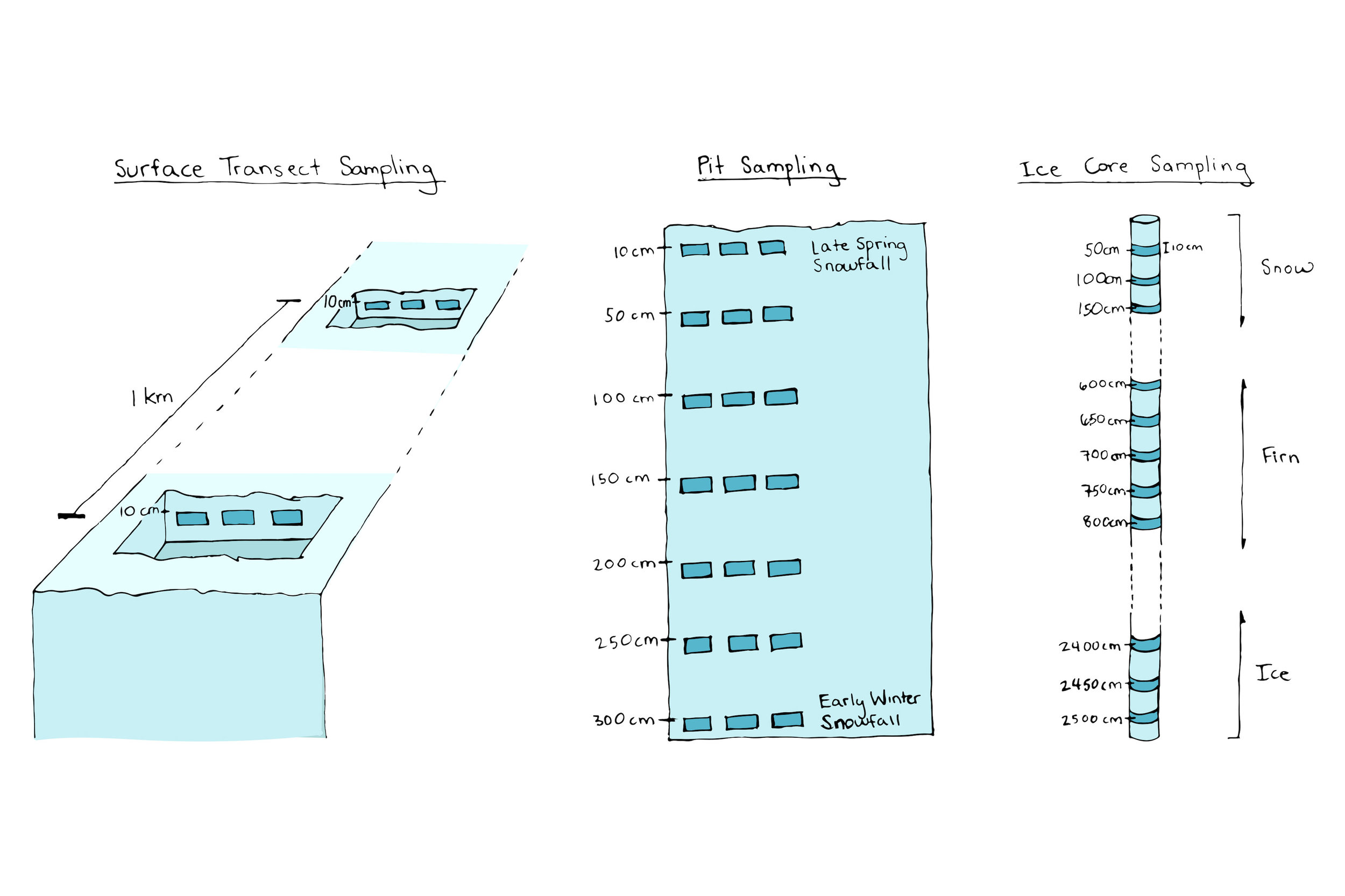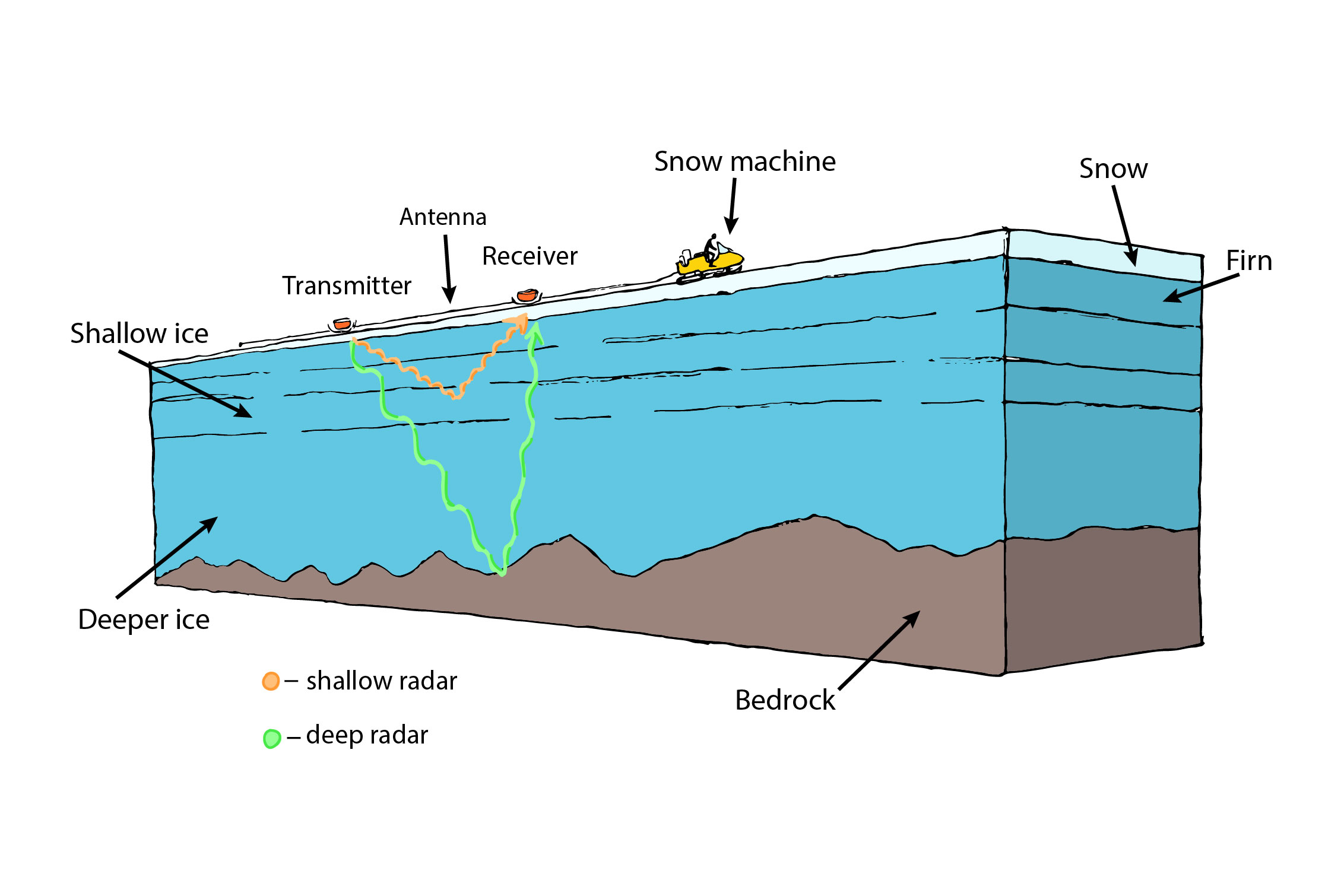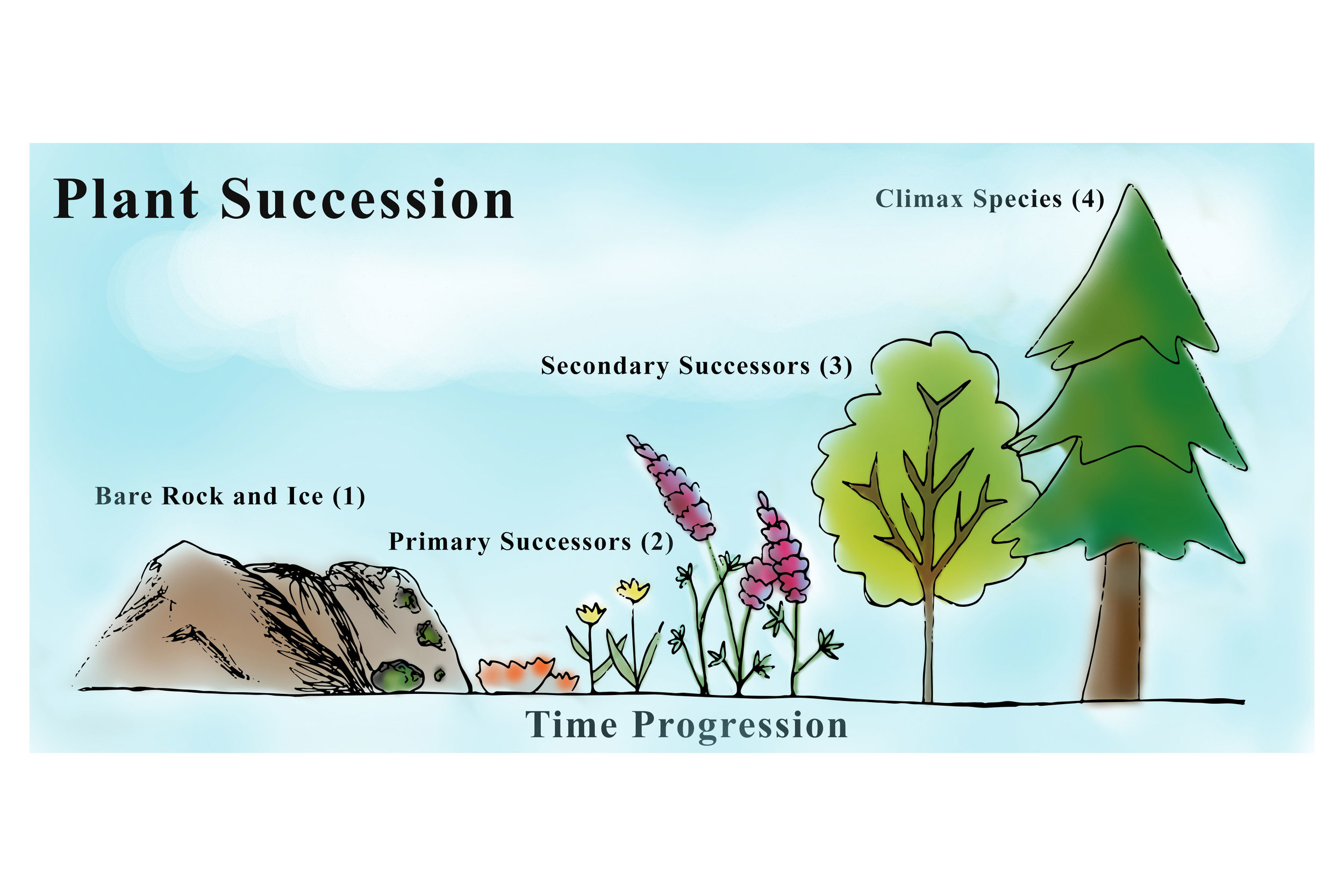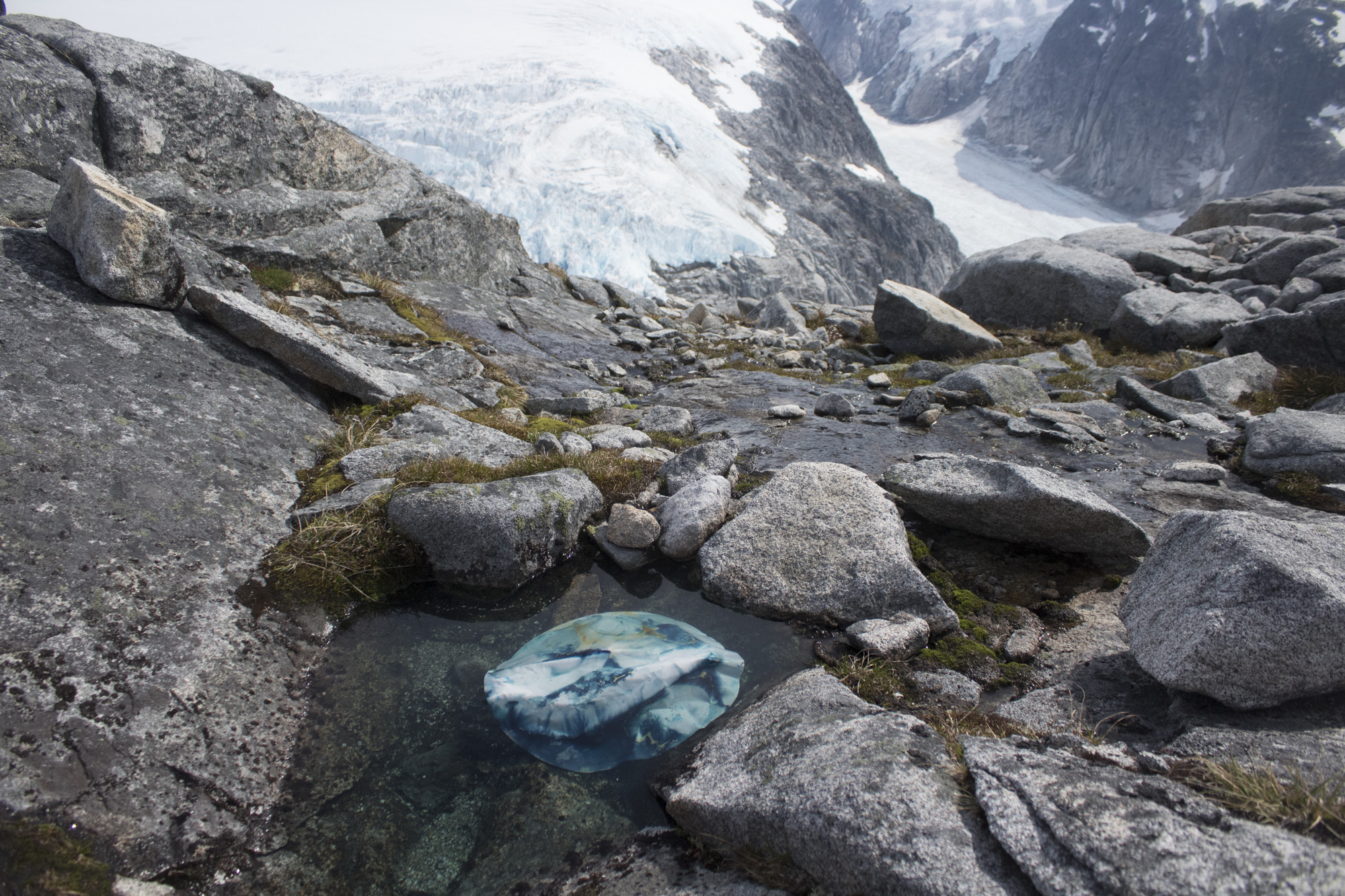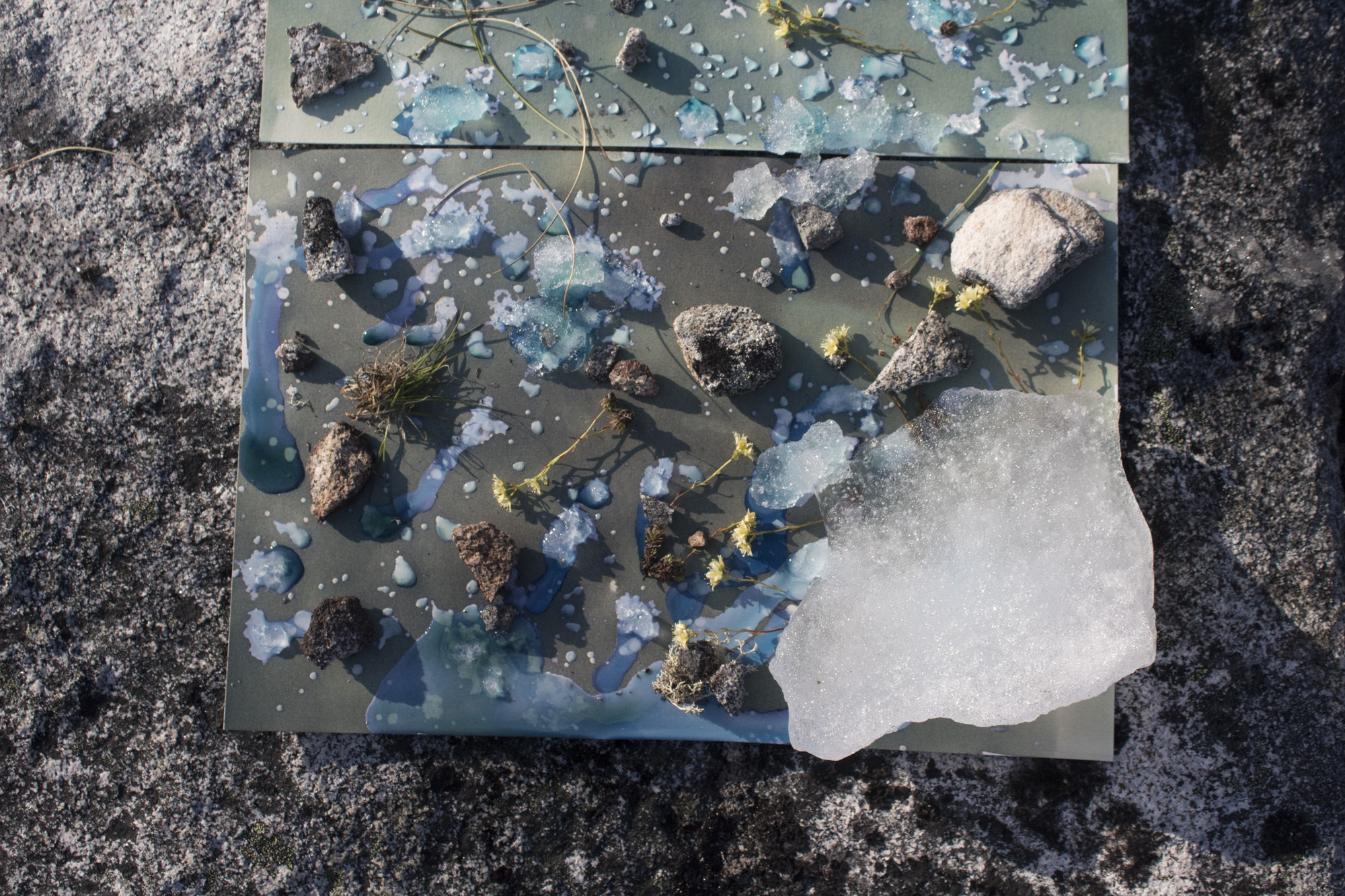JUNEAU ICEFIELD RESEARCH PROGRAM
The Juneau Icefield Research Program (JIRP) is an eight-week expeditionary research and educational program in Southeast Alaska. Participants (undergraduate, graduate, and high school juniors and seniors) traverse from Juneau, Alaska to Atlin, British Columbia while staying in a series of permanent camps along the way. During the traverse, students collaborate with leading scientists in a wide range of disciplines related to climate change, including glaciology, geology, and biology. For 70 years, the program has maintained the longest running study of any glacier in the Western Hemisphere. Such comprehensive and continuous studies are rare yet crucial to our understanding of past and present climate change.
art on jirp
In 2017, I worked with the JIRP leadership team to craft and organize an Artist Residency program on the Icefield, and then spent the summer of 2017 in that role. I continue to partner with JIRP as the Art Program Coordinator, spearheading the Student Artist Program and developing the summer art curriculum. For the 2018 field season, I returned as Art + Science Communication Faculty (alongside Kristin Link and Ben Huff), and JIRP welcomed Grace Juneau from Skidmore College as the inaugural Student Artist.
The Artist-In-Residence program and the Student Artist program are important additions to JIRP to help visualize connections between science and society, and to provide a unique educational experience for students to approach the Juneau Icefield with an analytical, creative, and scientific lens. Artists are given the opportunity to pursue their creative practice in the field, while simultaneously diving deeper into the scientific realms with which their art intersects. JIRP approaches science communication from many different angles – from documentary photography to science journalism to scientific illustration to abstract art-making. JIRP’s art programs offer a unique, creative perspective to storytelling. These roles help JIRP visualize the way in which these types of science communication methods can exist together.
With my own art practice on JIRP, I explore ways to blur the line between human and geologic time scales, experiment with cyanotype photography to document the passage of time and glacial melt, and use storytelling and memory to access a more emotional understanding of climate change. Throughout each summer, I led creative workshops (including field sketching, cyanotype photography, watercolor painting, and scientific illustration), gave presentations about my artwork, organized collaborative and participatory art projects, and worked with students to visualize scientific data for their research group presentations. During the 2018 season, I also served as a mentor and facilitator for the Student Artist.
photo by Ben Huff
projects
CONSTELLATIONS
Constellations is a memory exchange project, created with the participants of the 2018 field season of JIRP. At the end of the expedition, each student, staff, and faculty member was invited to record a memory from their summer, transcribed on the back of a collaborative cyanotype print, and redistributed to fellow participants. Each person received a unique print with another anonymous memory on the back.
Love letters for glaciers
Love Letters for Glaciers is a time capsule project, created with the participants of the 2017 field season of JIRP. At the end of the expedition, each student, staff, and faculty member was invited to write their own “love letter for a glacier” and add it to a time capsule that I installed overlooking the JIRP basecamp and Gilkey Glacier.
ICE FIELDS
Ice Fields is a photo project created on the Icefield. Each photograph was exposed throughout the day from one of three basecamps, creating a direct negative cyanotype print in the camera. The images record every non-rainy day I experienced over the course of the eight-week residency, while living and traversing over the icefield.
hydrologic consequence (mendenhall glacier terminus)
Hydrologic Consequence (Mendenhall Glacier Terminus) is a series of cyanotype prints made with rocks and residue samples from the historic Mendenhall terminus sites, and fixed with ocean water from Amalga Harbor.
hydrologic consequence (2017)
Hydrologic Consequence (2017) is a series of cyanotype prints made in collaboration with ecology faculty Catharine White. Each print is made by exposing cyanotype on absorbent filter paper used in collecting ecology samples, such as separating algae from snow.
LIGHTER THAN THE WATER IN THE OCEAN
Lighter Than the Water in the Ocean is a series of cyanotype prints. In collaboration with the Isotope Geochemistry Research Team, each print was exposed using a snow sample collected on an expedition to a remote section of the Icefield. Taken together, the samples span the last year's worth of weather.
the confluence of water
The Confluence of Water is a series of abstract blue ice-inspired field sketches, completed at different sites while traversing across the Icefield.
CAIRN
Cairn is a video documentation of my effort to create a cyanotype cairn on the Taku Glacier, as a marker of time and light, and my physical engagement with the site.
sundial
Sundial is a record of light on the Juneau Icefield, using cyanotype paper and a Campbell-Stokes recorder – a scientific tool to measure sunlight.
further footholds
An ongoing project in collaboration with the Juneau Icefield Research Program, Further Footholds employs the traditional repeat photographic technique used for monitoring glaciers to instead reimagine feminist histories in glaciology, mountaineering, and scientific exploration.
XXI (After adrienne)
XXI (After Adrienne) is a series of actions performed onsite at locations across the Icefield – drawing circles in the landscape, using the body as radius.
Body geology (flow): juneau icefield
Body Geology (Flow) is a video documentation of actions onsite, recorded outside Camp 18 on the Icefield. In locations overlooking the Vaughan Lewis Icefalls and the Gilkey Glacier Trench, I attempt to find empathy and intimacy with the dynamic geology of the area by mimicking and directly engaging with the landscape through physical gestures.
More info coming soon.
workshops
cyanotypes
Cyanotype workshops were taught in small groups throughout the summer. Each participant learned about the photographic process and experimented with different exposure techniques, such as traditional botany prints, abstract ways of using natural materials such as snow, and using highly absorbent scientific filter paper.
Watercolor painting
Using the landscape as inspiration and material, workshops included basic techniques in watercolor painting (including paint-handling, brushes, color theory, and sketching), as well as strategies for observing and documenting information.
field sketching
Field sketching exercises cultivated strategies for recording scientific research and documenting experience. Field sketching sessions took place across the Icefield throughout the summer, and ranged from lessons on perspective, to contour drawing, scientific illustration, note-taking, and shading. Many sessions were led in collaboration with fellow artists Annika Ord, Drew Higgins, and Kristin Link.
contour drawing
Blind contour drawing workshops emphasized the value of drawing as a way to foster close looking and observation, to better record information and form of objects - from plants to rock formations to Icefield landscape.
scientific illustration
Workshops gave students basic tools for both hand-drawn and digital illustrations, to help them better visualize date and research, and to use as a tool for science communication in presentations. Taught in collaboration with art faculty Kristin Link.


